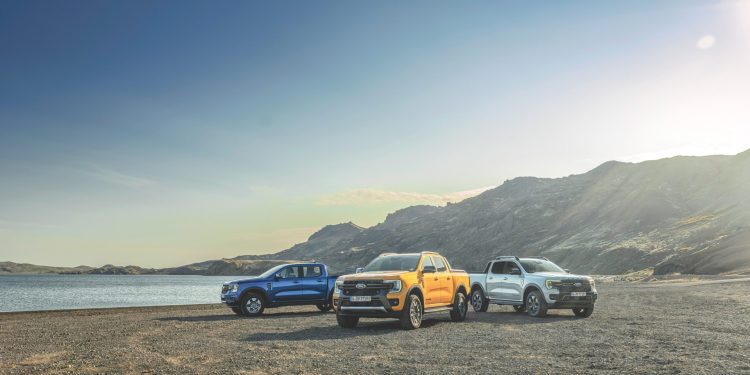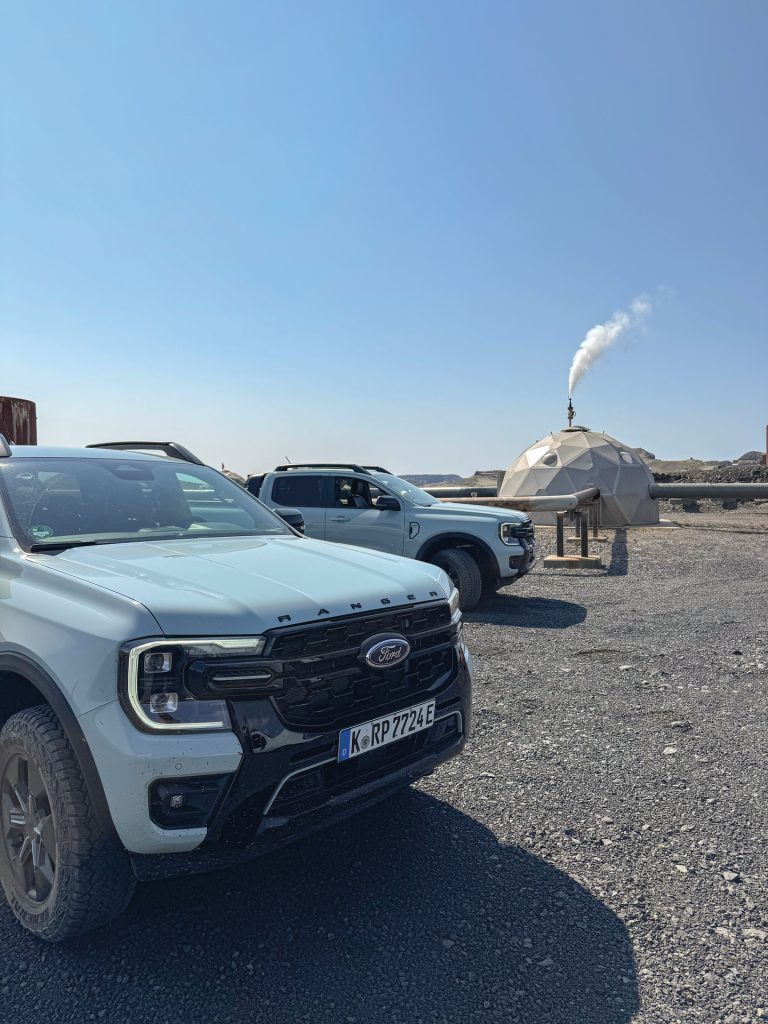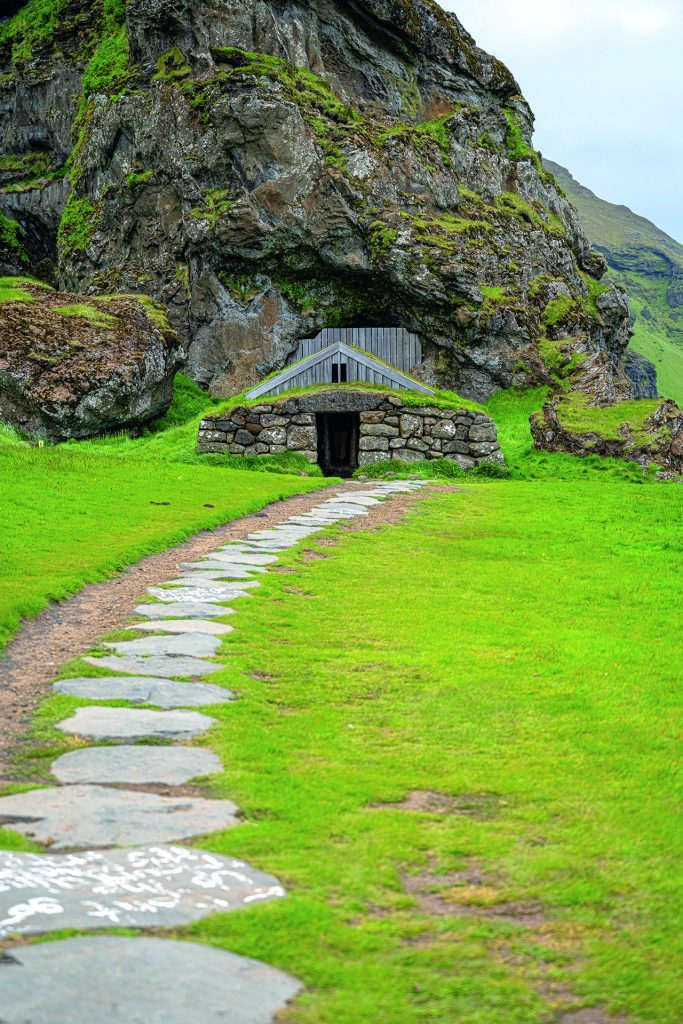2025 Ford Ranger PHEV review
Words: Richard Edwards | Photos: Ford
I’m wearing a puffer jacket in the middle of summer. Why? Because I’m in Iceland. A land so far north the sun barely sets at this time of year and a place that couldn’t be more fitting for testing Ford’s long-awaited plug-in hybrid ute, the new Ranger PHEV.
We’re here with the Stormtrak variant, the flagship of the electrified Ranger range. The spec’s right up there with the best Ford has to offer and this trip out of Reykjavík, up into the Hengill volcanic plateau and back via farms and geothermal wonders, would give it the ultimate real-world workout.
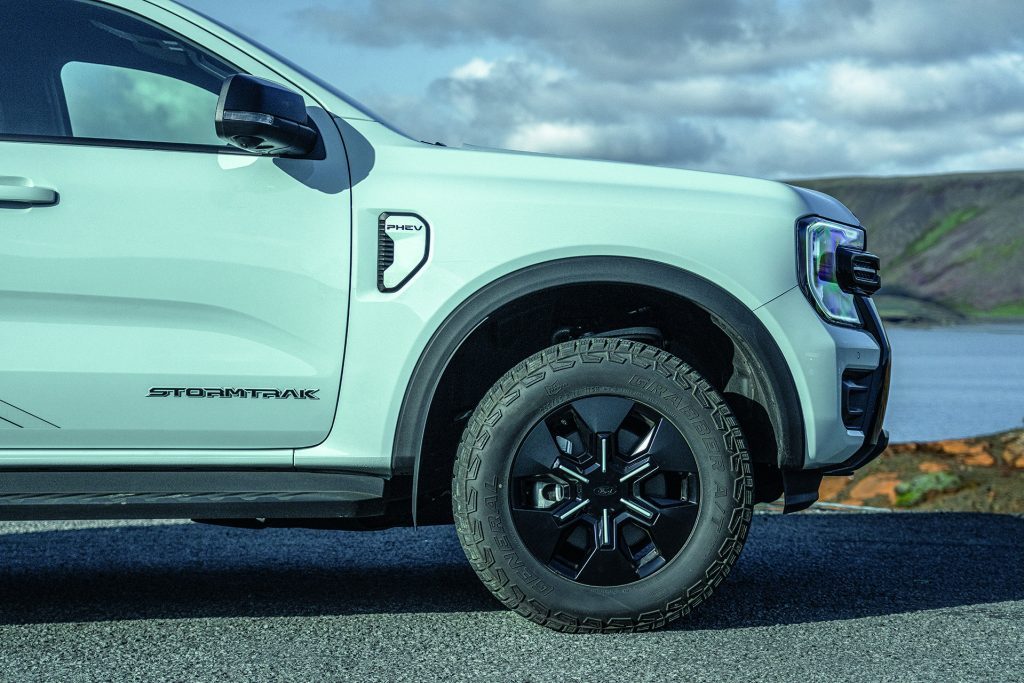
It still looks like a Ranger…mostly
From the outside, you’d be hard-pressed to spot the electrification. Apart from the “PHEV” badging in place of the usual Bi-Turbo or V6 labels, and a discreet AC charge port next to the fuel filler, it’s classic Ranger. Our one wore a new launch colour, a steely grey that suits the truck’s rugged looks, and featured cladded Stormtrak wheels that freshen up the familiar stance with a more futuristic edge.
With its petrol-electric mash-up, there is a total of 207kW and 697Nm so more torque than the diesel models, more power too, and all routed through Ford’s full-time 4WD system with low-range and a rear diff lock. It’s a serious powertrain with a decent 3.5-tonne towing rating. And that’s the point. Ford hasn’t neutered the Ranger to make it greener. It’s still a Ranger, just with more options underfoot.
Ford says the 49km (NEDC) EV range should cover the daily needs of half their Ranger customers. That’s fine in theory. In Iceland’s cool climate, however, we saw closer to 30km of electric-only driving before the petrol motor kicked in. We didn’t plug the ute in at all on this trip, so everything we did came from what was in the battery and the tank at handover.
Still, it was enough to get us a decent way out of Reykjavík in EV mode before switching to hybrid power. The blend was seamless. Honestly, it’s so smooth you barely notice the changeover. That’s in part because the engine doesn’t have to try too hard. Unlike some rivals that pair tiny petrol engines with big batteries, the Ranger’s 2.3 turbo has enough muscle to be lazy and that helps refinement big time.
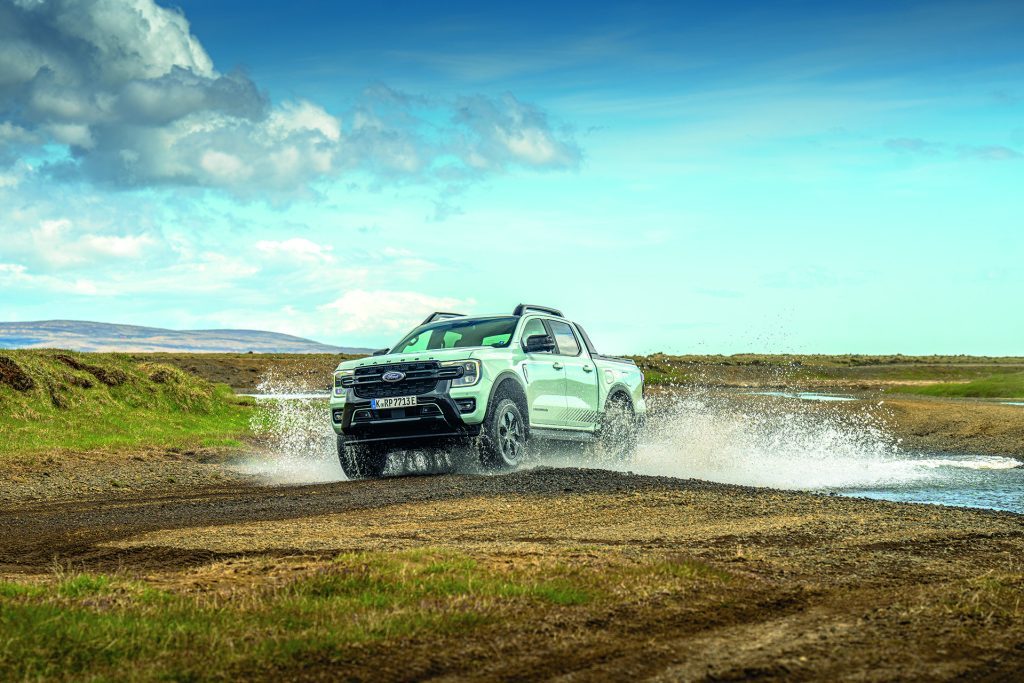
First stop: a farm, a roof-top tent, and Pro Power
Before the black sand trails and volcanic inclines, our first stop was something more down to earth: a farm near Kjósarhreppur. It was the perfect spot to explore the lifestyle side of this ute.
Ford’s Pro Power system turns the Ranger into a mobile generator, the Stormtrak with three plugs, up to 6.9kW total output and serious grunt. Enough to run your camp gear and even an electric blanket in your rooftop tent (and yes, judging by Instagram, Ranger owners really do love those). It’s not a gimmick. This is the kind of thing that makes this Ranger more than just another PHEV.
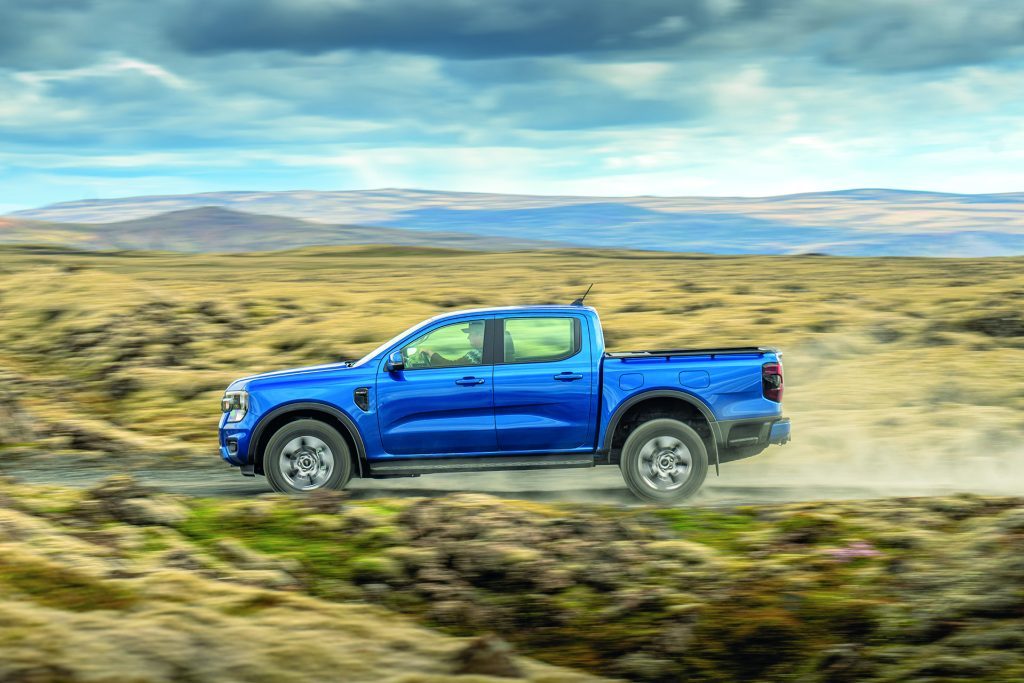
Into the wild: sheep, lava, and inclines
Back on the road, we wound our way past Lake Þingvallavatn, through Hengill, and up into volcanic territory. At one point, we literally drove the Ranger PHEV up the side of a volcano. I checked the screen, 50 per cent gradient, and the truck just walked it.
Off-road modes like Mud & Ruts and Slippery are available, along with 4A, 4H, and 4L. With the rear diff locked and low range engaged, the Ranger’s electric torque made slow climbing a breeze. No turbo lag, no snatching. Just smooth, controllable pull from zero RPM.
Even the descent was impressive. Using hill descent control, the truck tiptoed down at a user-set 6km/h. And unlike older systems that felt clunky and on–off with the brakes, this one was smooth, likely thanks to regenerative braking blending in with the conventional stoppers. It honestly felt more composed than a diesel.
And yes, we did see sheep on the road. Because Iceland.
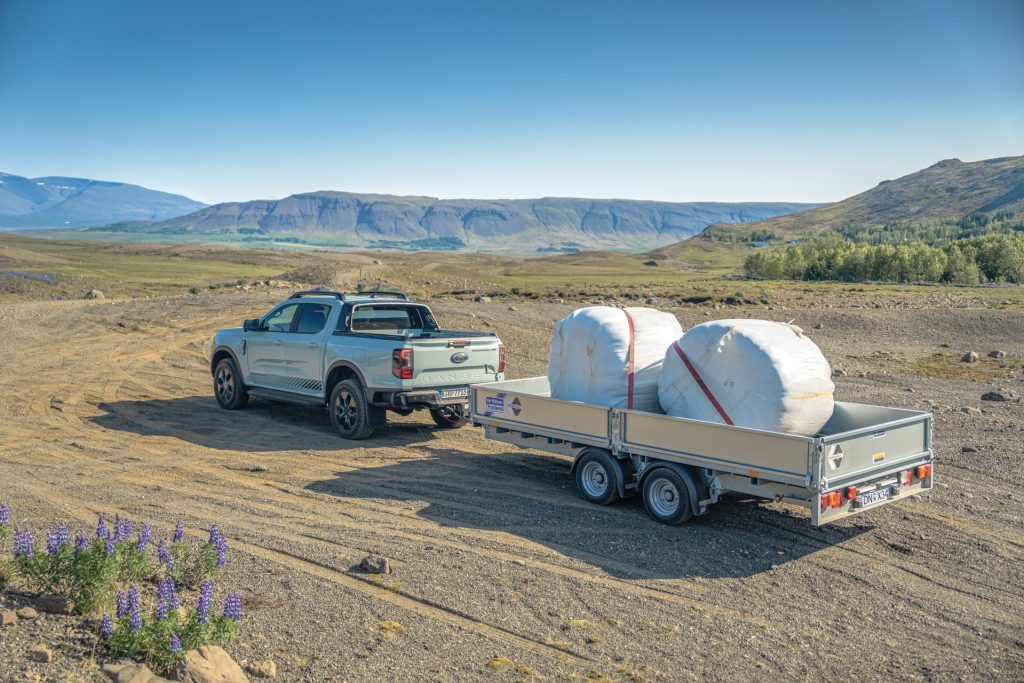
Bonus: vegetables with no sunlight
Not far from the Hellisheiði geothermal power plant, we visited a greenhouse unlike any other. It is a completely windowless facility growing vegetables using nothing but geothermal heat and LED lighting. Iceland is just that kind of place. Clean energy meets clever thinking. Which made me reflect on the Ranger PHEV again. No, it’s not a perfect EV. But it doesn’t need to be. It’s a clean step forward for people who need a capable ute but want to reduce their fuel use and maybe power a farm tool or two off-grid.
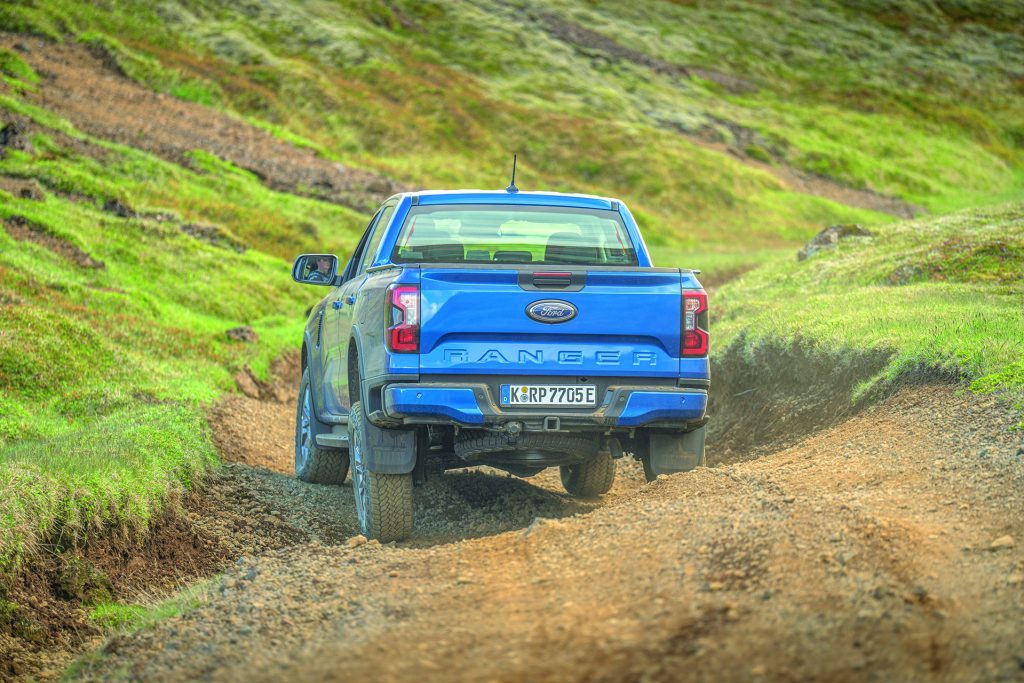
So, who’s it for?
Let’s be real. Fleets are going to love this thing. They can slash their average emissions without retraining staff or changing use patterns. Plug it in overnight at base, and you’ve got 30–40km of cheap EV driving every day. Done.
For private buyers, the price will be the sticking point, with its large premium over the diesel models and it’s a big step up from Chinese PHEV utes with longer electric ranges.
But this isn’t a science experiment. It’s a real ute. One that tows, climbs, carries, and just happens to be electrified.
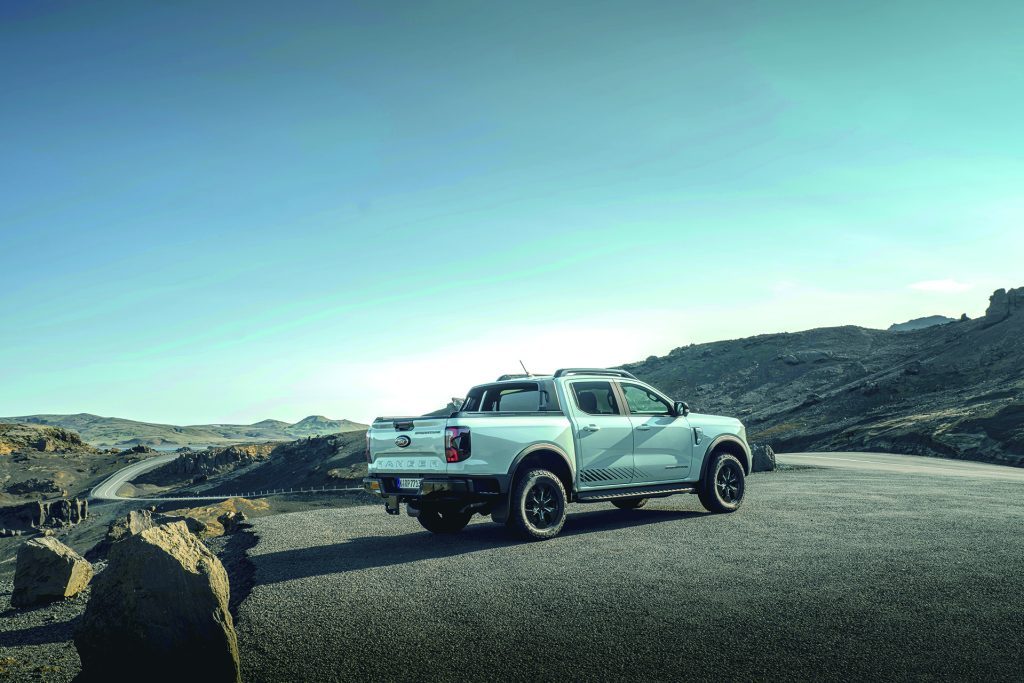
Final thoughts: the best Ranger yet?
Honestly? I think so. The Ranger PHEV is the best Ranger I’ve driven; not because it’s faster or fancier, but because it’s smarter. It blends power sources brilliantly. It’s smooth, refined, confident, and capable. And other than electric range it never once felt like a compromised vehicle.
The obvious question is does it match up to the BYD Shark and GWM Cannon Alpha. As an electric vehicle, it is not particularly close. As a ute, the Ranger likely keeps its nose ahead in so many areas.
Could it use more EV range? Sure. Faster charging? Yes. But those are wishlist items. What Ford has delivered is a ute that does everything it should, and a bit more, all while burning less fuel.
In the land of volcanoes and electric vegetables, that feels right.
Iceland’s Geothermal Powerhouse
Geothermal energy provides nearly 700 megawatts of electricity in Iceland or about 27 per cent of its total electricity generation. When combined with hydro, the country operates on almost 100 per cent renewable electricity.
The largest facility, Hellisheiði Power Plant, produces 303MW of electricity and 400MW of thermal energy, serving both the national grid and Reykjavík’s heating system. Located on the Hengill volcanic ridge, it harnesses steam from deep geothermal wells to power turbines and heat homes.
It also hosts CarbFix, a pioneering project that captures carbon emissions and injects them into underground basalt, where they solidify into rock within two years.
Iceland’s geothermal model also supports greenhouse farming and industrial energy use, all powered by the earth. New Zealand taps similar volcanic resources, like the Wairakei and Ngā Awa Pūrua stations near Taupō, but on a smaller scale, generating around 13–17 per cent of our electricity through geothermal sources.


